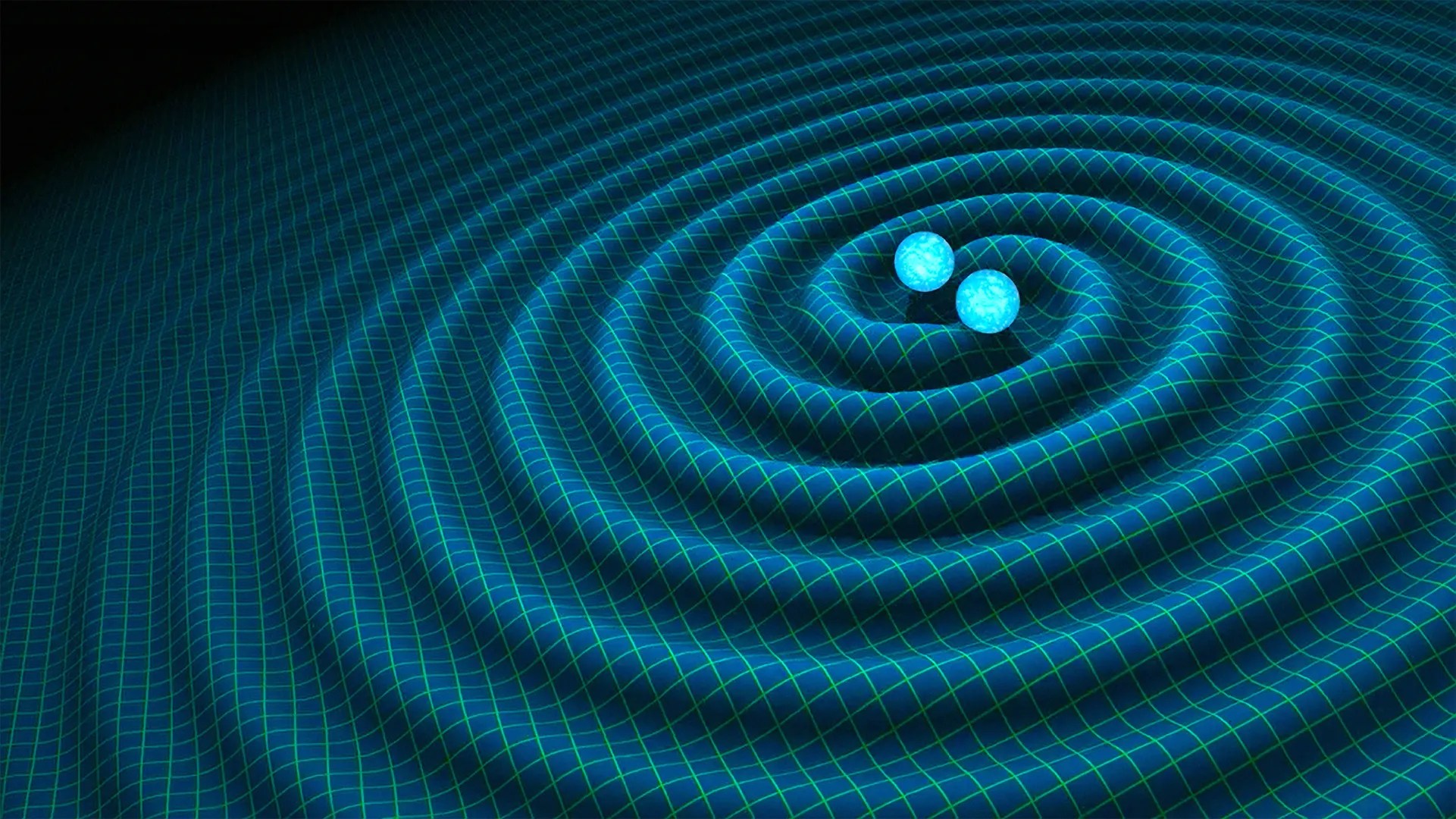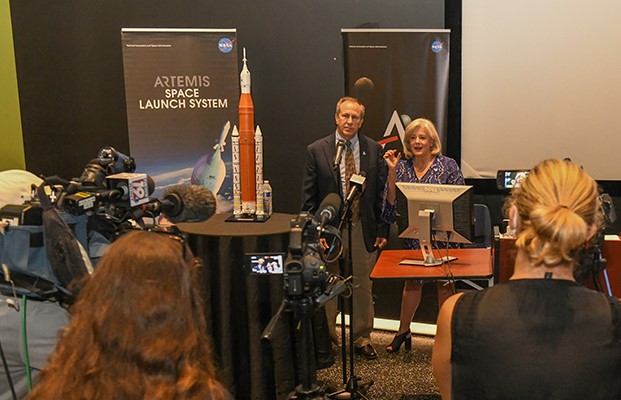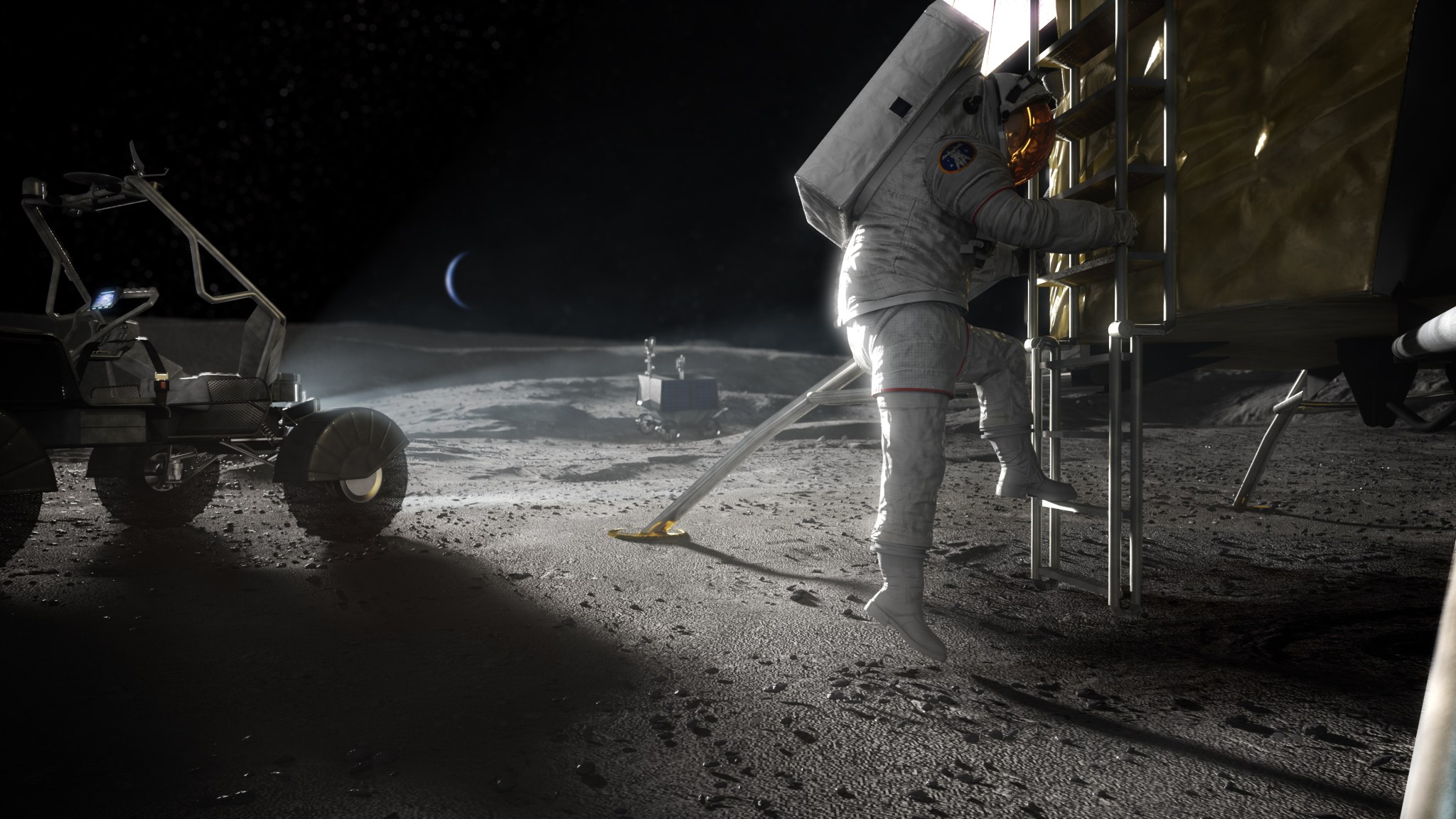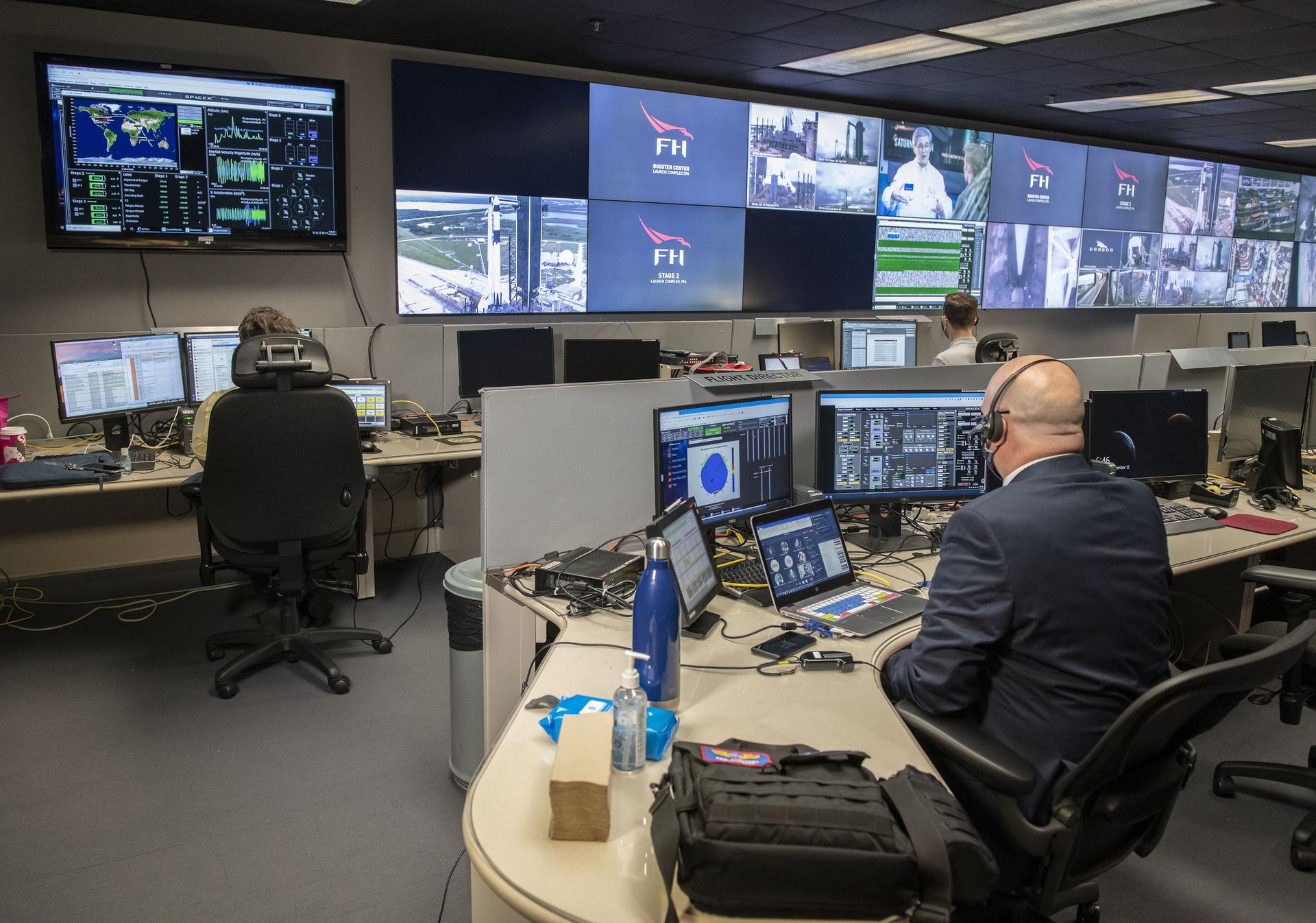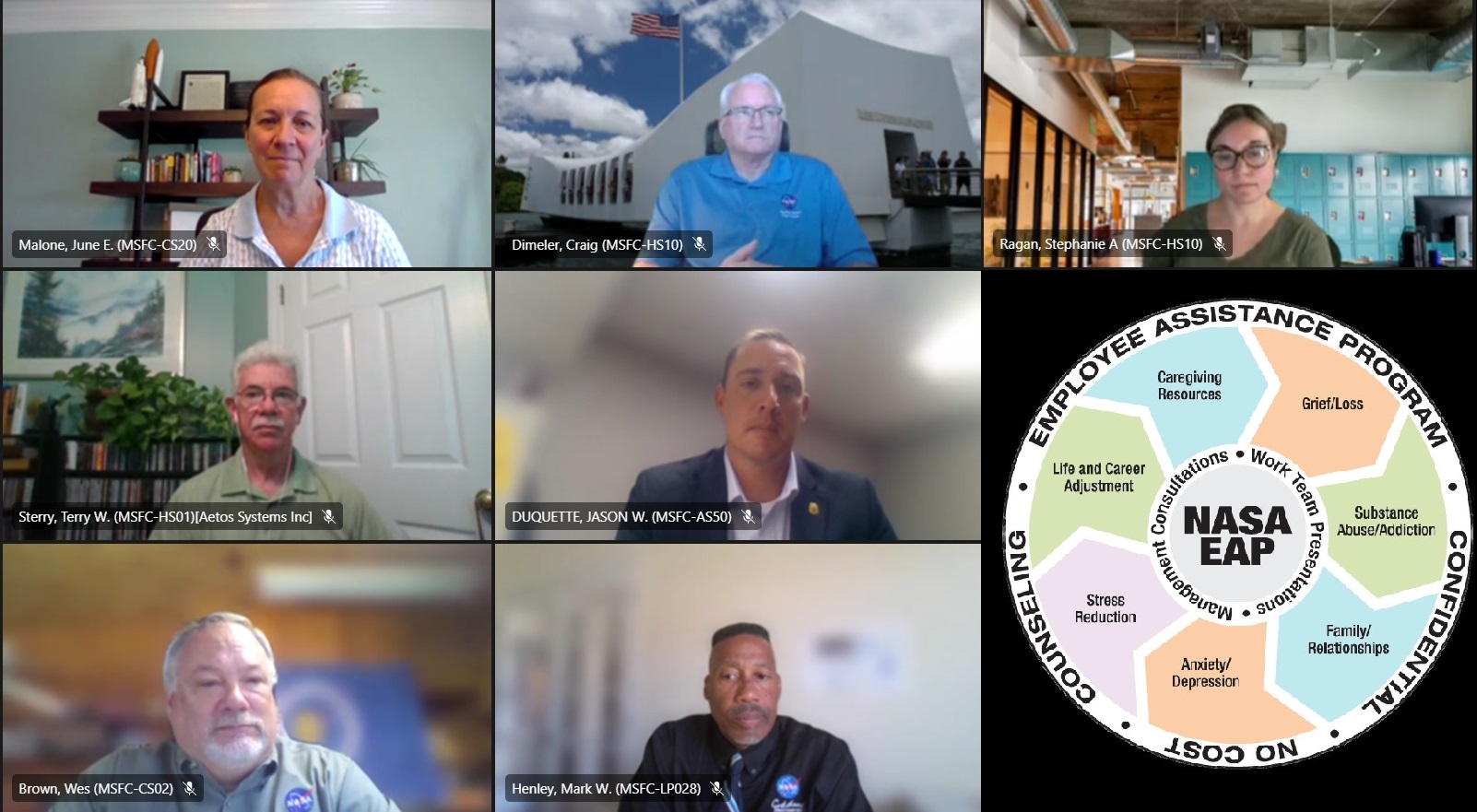Director’s Corner: The Season of Artemis is Here
As we look forward to cooler weather, we also enter a new season in human space exploration — what I like to call the “Season of Artemis.” I want you to know that the community is behind us as we reach more and more milestones on some of NASA’s biggest, boldest missions.
Last week at a media event at the U.S. Space & Rocket Center, I bragged on the Marshall team as we build momentum for the Artemis I mission. While this first step in our journey back to the Moon and on to Mars has been years in the making, these last few months have been particularly exciting, and the culmination of our efforts is closer than ever. I can’t wait for liftoff, when all your hard work is on full display for the world to see!
The Artemis missions and the Space Launch System are only possible with you, the Marshall team, and your expertise and dedication. You never wavered on our commitment to design and deliver a vehicle with unprecedented capabilities that will launch astronauts and what they need to live and work in deep space.
I’m pleased to share that the SLS core stage, launch vehicle stage adapter, and fueled Interim Cryogenic Propulsion Stage are assembled – and in place – between the solid rocket boosters on the mobile launcher at Kennedy Space Center’s Vehicle Assembly Building. Next up for the Artemis I vehicle is modal testing to understand the rocket’s natural frequencies and vibrations. With every milestone we complete, we inch closer to the launch pad, bringing to life the world’s most powerful rocket!
Artemis I includes the CubeSats that have been installed into the Orion Stage Adapter as secondary payloads. One of those, the Near-Earth Asteroid Scout, or NEA Scout, was developed right here at Marshall. NEA Scout is an example of our flexibility as a team and connects science, robotics, and new technologies with Artemis I.
All the momentum over the past decade has led us to this point. When I think about how far we’ve come and the amount of people who worked so hard to get to this moment, seeing the rocket take shape at the Cape – it fills me with pride. Not all those team members are still with us, but their spirits live on as we approach Artemis I. People are the soul of what we do, and we are truly standing on the shoulders of giants as we glance toward the horizon at this historic launch.
This month, we also celebrate Michoud Assembly Facility’s 60th anniversary. Our Michoud family is going through a tough time right now, but the bravery and togetherness of the Michoud team throughout the New Orleans area shines through again and again. They are resilient, whether through hurricanes, tornadoes, or this challenging pandemic.
We are laser-focused on a successful launch of Artemis I and always ready for the next milestones. Thanks to continued progress at Michoud and here at Marshall, we are actively working five flight vehicles for the Artemis missions! I’m so excited about these future Artemis missions with the SLS – including evolving its capability with the Exploration Upper Stage. What you are building really is a national asset and the backbone of a sustainable deep space exploration program that will yield amazing discoveries for years to come.
Our center will be at the forefront of shaping the future of that deep space architecture not only through future Artemis missions with SLS, but through the blueprints we now have for future human landing systems. The HLS is the final piece of the puzzle needed for landing astronauts on the Moon and, this week, NASA selected companies to develop HLS design concepts and risk-reduction solutions for future lunar service missions.
As a center and as an agency, we will always look upward and out into the unknown. Our next great science mission, the Imaging X-Ray Polarimetry Explorer, or IXPE, will explore some of the most extreme and mysterious objects in the universe. As IXPE prepares to launch in December, the mighty SLS rocket marches to the pad at Kennedy and we continue our 24/7 support of payload operations for the International Space Station, my optimism has never been higher for the future of this center.
I’m proud of the Marshall and Michoud teams for all you’re doing – for Artemis and all our great missions. And you should be proud, too – this rocket and this mission will soon be possible because of your hard work. We are strong because of you and the ways you contribute to your work each and every day. I am confident Marshall will remain strong as we enter the season of Artemis!
Jody
NASA Selects Five U.S. Companies to Mature Artemis Lander Concepts
NASA has selected five U.S. companies to help the agency enable a steady pace of crewed trips to the lunar surface under the agency’s Artemis program. These companies will make advancements toward sustainable human landing system concepts, conduct risk-reduction activities, and provide feedback on NASA’s requirements to cultivate industry capabilities for crewed lunar landing missions.
The awards under the Next Space Technologies for Exploration Partnerships (NextSTEP-2) Appendix N broad agency announcement are firm fixed-price, milestone-based contracts. The total combined value for the awards is $146 million, and the work will be conducted over the next 15 months. The companies that received awards and their award values are:
- Blue Origin Federation of Kent, Washington, $25.6 million.
- Dynetics (a Leidos company) of Huntsville, Alabama, $40.8 million.
- Lockheed Martin of Littleton, Colorado, $35.2 million.
- Northrop Grumman of Dulles, Virginia, $34.8 million.
- SpaceX of Hawthorne, California, $9.4 million.
“Establishing a long-term human presence on the Moon through recurring services using lunar landers is a major Artemis goal,” said Kathy Lueders, NASA’s associate administrator for Human Exploration and Operations at Headquarters. “This critical step lays the foundation for U.S. leadership in learning more about the Moon and for learning how to live and work in deep space for future missions farther into the solar system.”
The selected companies will develop lander design concepts, evaluating their performance, design, construction standards, mission assurance requirements, interfaces, safety, crew health accommodations, and medical capabilities. The companies will also mitigate lunar lander risks by conducting critical component tests and advancing the maturity of key technologies.
The work from these companies will ultimately help shape the strategy and requirements for a future NASA solicitation to provide regular astronaut transportation from lunar orbit to the surface of the Moon.
“Collaboration with our partners is critical to achieving NASA’s long-term Artemis lunar exploration goals,” said Lisa Watson-Morgan, Human Landing System Program manager at NASA’s Marshall Space Flight Center. “By partnering with innovative U.S. companies, we will establish a robust lunar economy while exploring new areas of the Moon for generations to come.”
This opportunity is distinct from the initial crewed lunar landing demonstration mission awarded under the NextSTEP-2 Appendix H procurement, which will serve as the proof of concept for the Artemis architecture.
NASA’s goals under Artemis include enabling a safe and cost-efficient long-term approach to accessing the lunar surface and becoming one of multiple customers purchasing services in a lunar transportation market. Much of what the agency develops for the Moon will be applied to future exploration at Mars.
NASA’s Artemis missions include landing the first woman and first person of color on the lunar surface, sending a suite of new science instruments and technology demonstrations to study the Moon, and establishing a long-term presence there.
Learn more about Artemis here.
NASA, SpaceX Continue Planning for Next Crew Rotation Missions to Space Station
NASA and SpaceX are continuing plans to launch Crew-3 astronauts to the International Space Station as early as Oct. 31, and targeting the return home of Crew-2 astronauts in the early-to-mid November timeframe.
Crew-3 will be the third crew rotation mission with astronauts on an American rocket and spacecraft from the United States to the space station, and the fourth flight with astronauts, including the Demo-2 test flight in 2020, Crew-1 mission in 2020-21, and the ongoing Crew-2 flight as part of the Expedition 65 crew.
The commercial crew team at NASA’s Marshall Space Flight Center, led by Steve Gaddis, has a long working relationship with SpaceX, having worked with the commercial partner to improve safety and reliability of the Merlin engines, stage propulsion, Draco and SuperDraco thrusters, the abort and flight termination systems, structures, materials and processes, fracture control, and integrated performance analyses.
“Our team worked extremely hard troubleshooting around the potential Boeing OFT-2 launch. Now we have pivoted to Crew-3, with Crew- 4 happening soon afterward,” said Gaddis, deputy manager of the Launch Vehicle System Office. “The days are busy as we are always working two missions – one that is near-term and close to launch, and another that is in-flow preparing for launch.”
The Crew-3 mission will launch NASA astronauts Raja Chari, mission commander; Tom Marshburn, pilot; and Kayla Barron, mission specialist; and European Space Agency astronaut Matthias Maurer, also a mission specialist, aboard a Crew Dragon spacecraft and Falcon 9 rocket from Launch Complex 39A at NASA’s Kennedy Space Center. The crew is scheduled for a long-duration stay aboard the orbiting laboratory, living and working as part of what is expected to be a seven-member crew.
Crew-3 astronauts plan to arrive at the station to overlap with NASA astronauts Shane Kimbrough and Megan McArthur, Japan Aerospace Exploration Agency astronaut Akihiko Hoshide, and European Space Agency astronaut Thomas Pesquet, who flew to the station as part of Crew-2 in April.
Missions teams also are targeting no earlier than April 15, 2022, for the launch of NASA’s SpaceX Crew-4 mission to the space station for a six-month science mission.
Crew-4 will be commanded by Kjell Lindgren with Bob Hines as pilot, both NASA astronauts. European Space Agency astronaut Samantha Cristoforetti will be a mission specialist and command the Expedition 68 crew, while the remaining crew member has yet to be named. Crew-3 astronauts are set to return to Earth in late April 2022 following a similar handover with Crew-4.
NASA’s Commercial Crew Program is working with industry through a public-private partnership to provide safe, reliable, and cost-effective transportation to and from the space station, which will allow for additional research time and will increase the opportunity for discovery aboard humanity’s test bed for exploration. The space station remains the springboard to space exploration, including future missions to the Moon and Mars.
International Astronauts Complete Power System Mods Spacewalk
Astronauts Akihiko Hoshide of the Japan Aerospace Exploration Agency and Thomas Pesquet of the European Space Agency concluded the first spacewalk conducted by two international partner astronauts out of the International Space Station’s Quest airlock Sept. 12, after 6 hours and 54 minutes.
Hoshide and Pesquet successfully assembled and attached a support bracket in preparation for future installation of the orbiting laboratory’s third new solar array. NASA is augmenting six of the eight existing power channels of the space station with new solar arrays to ensure a sufficient power supply is maintained for NASA’s exploration technology demonstrations for Artemis and beyond as well as utilization and commercialization.
The crew also replaced a device that measures the electrical charging potential of the arrays and associated surfaces in its vicinity, called a floating point measurement unit, on a separate truss section. The new device was powered on successfully.
This was the fourth spacewalk for Hoshide, the sixth for Pesquet, and the 12th spacewalk this year. Hoshide has now spent a total of 28 hours and 17 minutes spacewalking, and Pesquet’s total spacewalking time is 39 hours and 54 minutes. Space station crew members have now spent a total of 64 days, 5 hours, and 54 minutes working outside the station conducting 244 spacewalks in support of assembly and maintenance of the orbiting laboratory.
In November 2020, the International Space Station surpassed its 20-year milestone of continuous human presence, providing opportunities for unique research and technological demonstrations that help prepare for long-duration missions to the Moon and Mars and also improve life on Earth. In that time, 244 people from 19 countries have visited the orbiting laboratory that has hosted nearly 3,000 research investigations from researchers in 108 countries and areas. The Payload Operations Integration Center at NASA’s Marshall Space Flight Center oversees all experiments and science communications aboard the space station.
Marshall Hosts ‘Let’s Talk About Well-Being’ Session for Veterans
NASA’s Marshall Space Flight Center continued its “Let’s Talk About Well-Being” series Sept. 9 with a panel discussion for U.S. armed forces veterans, members of the reserves, and their families. Dr. Terry Sterry, center left, Marshall’s Employee Assistance Program coordinator, introduced a panel of Marshall personnel, including Air Force retiree June Malone, upper left, director of the Office of Strategic Analysis & Communications; Army retiree Wes Brown, lower left, manager of Marshall’s Office of Strategic Analysis & Communications strategy office; Army retiree Craig Dimeler, center top, a Marshall human resources specialist; Navy retiree Jason Duquette, center, a Marshall security specialist; Army retiree Mark Henley, center bottom, a Marshall security specialist; and former Marine Stephanie Ragan, right top, a Marshall human resources specialist. “Our goal is to reassure one another that our service was not in vain, and to share tools that help us continue to lead and serve with honor and distinction,” Brown said. He and the panelists encouraged healthy self-care, including proper diet and exercise. Several speakers praised the supportive veterans’ community across Huntsville and Redstone Arsenal. Marshall’s Office of Diversity and Equal Opportunity and Office of Human Resources are standing up a Veterans Employee Resource Group to offer tools and support to those in need; watch Inside Marshall for details. Most of all, the panelists agreed, it’s important to communicate with family, friends, and other veterans. “We need to dispel the practice of keeping things bottled up,” Brown said. “This veteran pride we have, people only understand it if they hear about it. So, get out there and tell your story.” (NASA)
Racin’ the Station Duathlon Returns
The Racin’ the Station duathlon returns Sept. 25 at NASA’s Marshall Space Flight Center after not being held in 2020 due to the COVID-19 pandemic.
The run/bike/run race challenges participants to “beat” the International Space Station by finishing the racecourse in less than 91 minutes and 12 seconds – the time it takes the station to orbit Earth. The two running segments are both 1.95 miles, and the biking segment is 14.3 miles. Participants can choose to complete the course as an individual or as part of a two-person relay team, passing off the running and cycling legs.
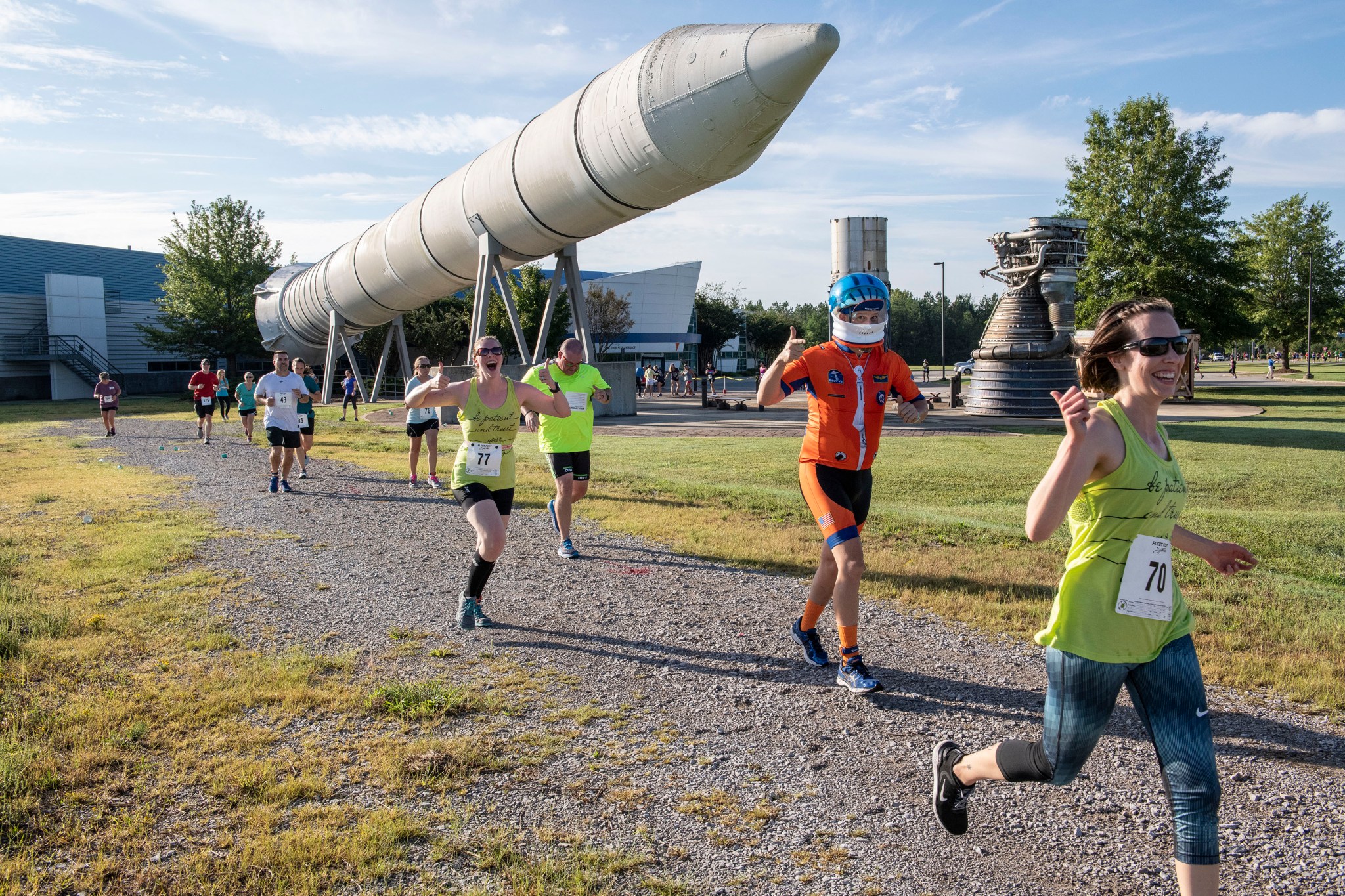
Registration, which is only open to U.S. citizens, is available here. Those with Redstone Arsenal access can register through Sept. 23. Those without Redstone access cannot register after Sept. 21. Participants must enter through Redstone’s Gate 9, and must have a valid driver’s license, tag receipt, and insurance card. For additional info, race maps, and more, visit here.
Packet pickup will be available at Fleet Feet in Huntsville on Sept. 24 from noon to 6 p.m. Race day packet pickup will be available at Marshall’s Activities Building from 7 to 7:45 a.m. The event starts at 8:15 a.m., followed by an awards ceremony at 11.
There is also a virtual race option available on the registration page. Those who can’t make it to Huntsville can complete their own race from any location and email results to issduathlon@gmail.com.
This year’s finisher award is a 3D-printed light-up Moon ornament featuring the race logo.
Race proceeds benefit the Marshall Association’s scholarship fund.















